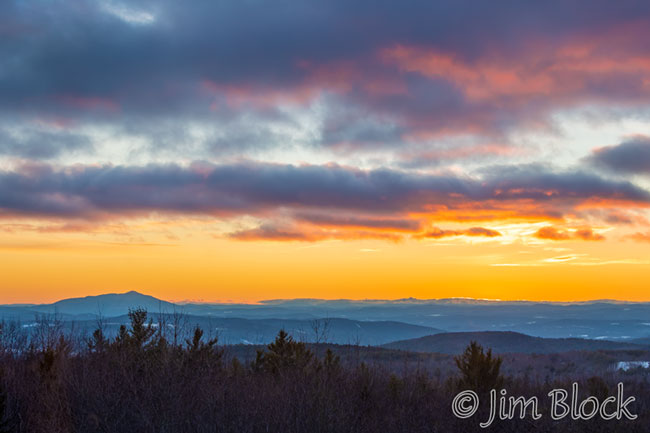
The sun has mostly been absent for much of January. But it made a brief appearance at sunset on the 7th and the 18th. Otherwise is has been a very gray month. Even in the photo above from January 7, all the mountains of Vermont were in low clouds, except for Ascutney on the left.
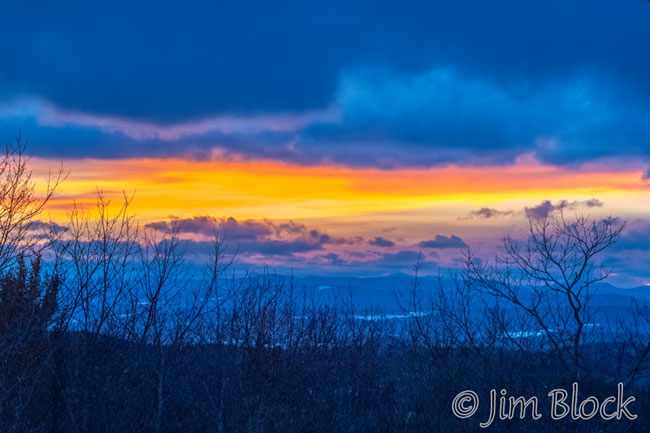
The hills of Etna got quite a bit more snow than the valley along Mink Brook January 16. It was snowing when I took the photo below at 9am.
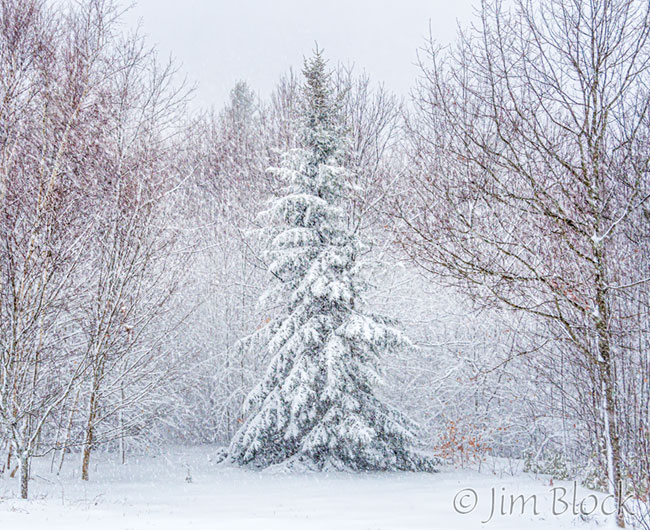
At 11am two deer appeared. It is rare to see mammals during or after a significant storm. They normally hunker down for several days after a storm.
We have had a very rare Black-and-white-breasted Nuthatch in our yard. Of course, most of you know that there is no such species. But this White-breasted Nuthatch has an abnormal black spot on its breast. George Clark believes an injury of some sort removed a patch of outer white feathers, thus revealing black ones below. The last few photo in the slide show below tend to indicate that is correct.
We have had around two dozen Common Redpolls in our yard for most of the month. This is an interruptive species, visiting our area only every few years when food in scarce up north. At times they can arrive in huge numbers. On January 18, a flock of over 1000 redpolls was observed in Bradford, VT. We had over 100 in our yard for several months a number of years ago.
The Red-breasted Nuthatch is a semi-interruptive species. They often can be seen year round, but they do appear in larger numbers some years in the winter.
Mourning Doves are common but quite beautiful in a plain way with a perfect light blue eye-ring. They are ground feeders.
What would photos of yard birds be if a Black-capped Chickadee was not included.
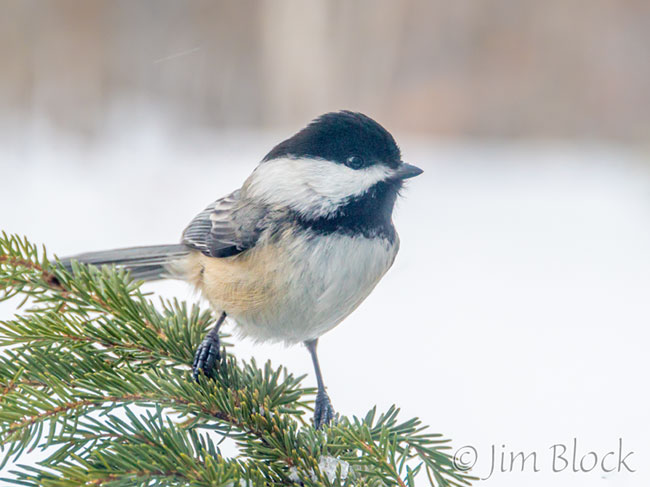
Meanwhile a Gray Squirrel made an unsuccessful attempt at a bird feeder.
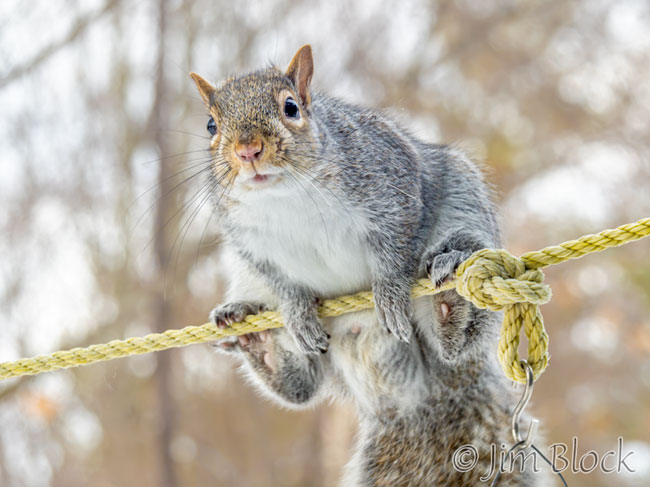
During hikes around Etna with Jann, I took few photos. But here are three.
Finally a Quiz or two. Study the photo below. What made the tracks? Which way was it moving? Are the tracks somehow raised above the surrounding snow, or does it just look that way? Why? Answers below.
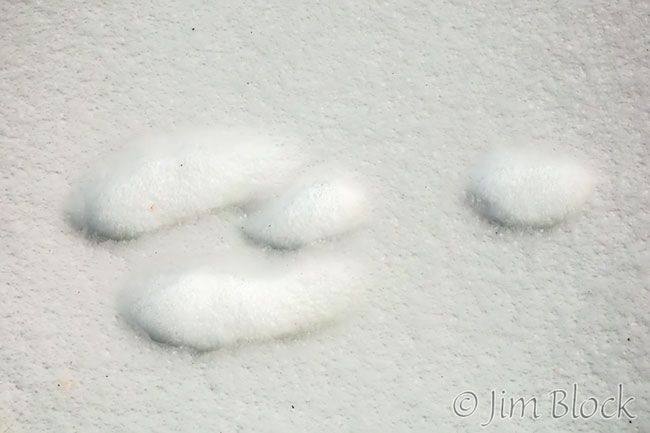
Another quiz. Consider a muffin pan. Are the “bumps” going in or out in this photo?
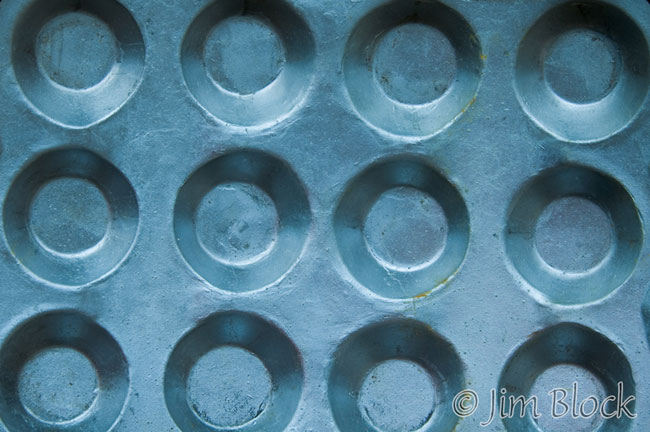
How about in this photo?
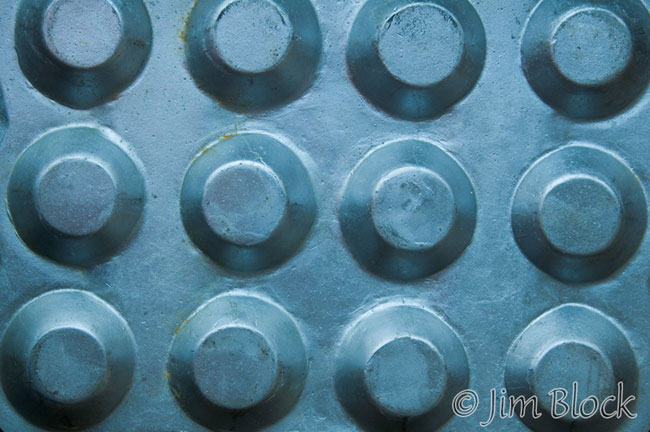
Here are the answers. I believe the tracks were made by a rabbit moving to the left in the photo because when the rabbit runs it places its larger rear feet in front of its front feet. The tracks are recessed as they should be, they just appear raised. Why? Consider the two muffin pan photos. It turns out they are the same photo. The only difference is one is rotated 180 degrees from the other. How we perceive objects is strongly influenced by the direction we expect light to be coming from — like from above.






















